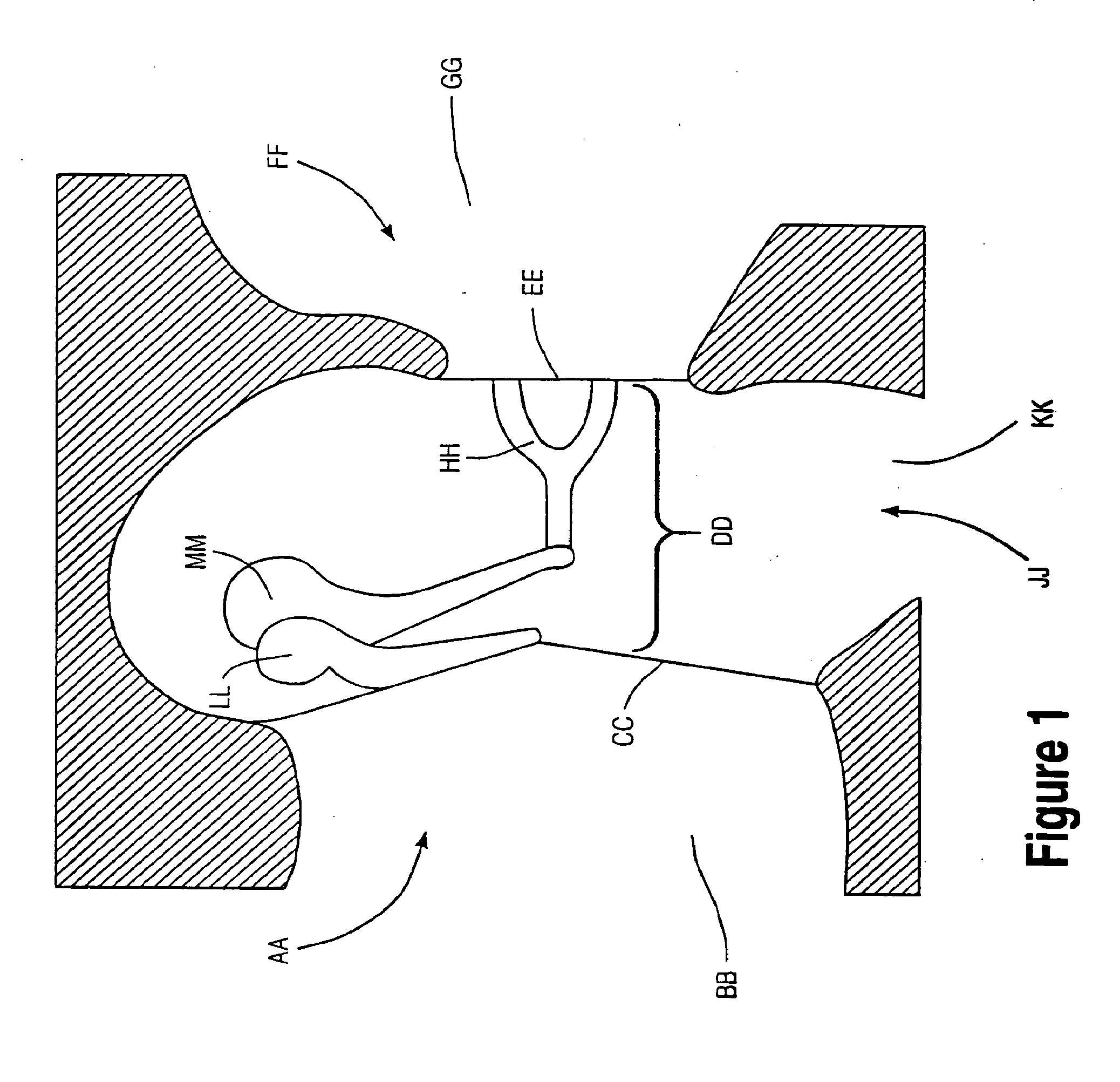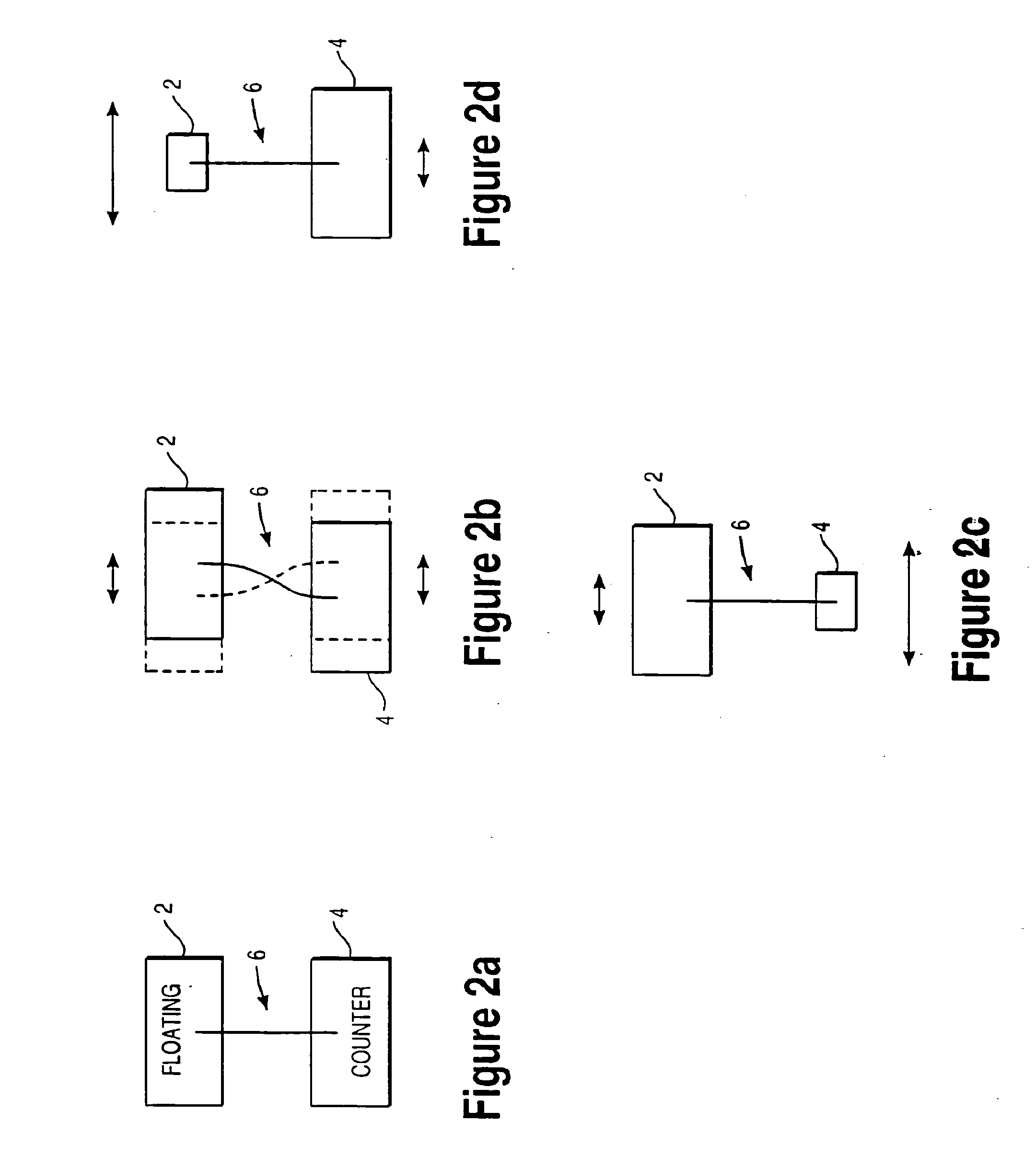Bone conducting floating mass transducers
a floating mass transducer and conducting technology, applied in the field of devices and methods for assisting hearing in persons, can solve problems such as the possibility of something going wrong, the inability of conventional acoustic hearing devices to be helpful to many hearing impaired, and the lack of sound insulation
- Summary
- Abstract
- Description
- Claims
- Application Information
AI Technical Summary
Benefits of technology
Problems solved by technology
Method used
Image
Examples
example 1
Transducer 4b
[0215]Transducer Construction: A 4.5 mm diameter by 2.5 mm length transducer, illustrated in FIG. 29, used a 2.5 mm diameter NdFeB magnet. A mylar membrane was glued to a 2 mm length by 3 mm diameter plastic drinking straw so that the magnet was inside the straw. The tension of the membrane was tested for what was expected to be the required tension in the system by palpating the structure with a toothpick. A 5 mm biopsy punch was used to punch holes into an adhesive backed piece of paper. One of the resulting paper backed adhesive disks was placed, adhesive side down, on each end of the assembly making sure the assembly was centered on the adhesive paper structure. A camel hair brush was used to carefully apply white acrylic paint to the entire outside surface of the bobbin-shaped structure. The painted bobbin was allowed to dry between multiple coats. This process strengthened the structure. Once the structure was completely dry, the bobbin was then carefully wrapped...
example 2
[0218]Transducer Construction: A 3 mm length transducer (similar to Transducer 4b, FIG. 31) used a 2 mm diameter by 1 mm length NdFeB magnet. A mylar membrane was glued to a 1.8 mm length by 2.5 mm diameter plastic drinking straw so that the magnet was inside the straw. The remaining description of Transducer 5's construction is analogous to that of Transducer 4b in Example 1, supra, except that: i) a 3 mm biopsy punch was used instead of a 5 mm biopsy punch; and ii) a 48 gauge, 3 litz wire was used to wrap the bobbin structure instead of a 44 gauge wire.
[0219]Methodology: The transducer was glued to the long process of the incus with cyanoacrylate glue. The transducer was connected to the Crown amplifier which was driven by the computer pure-tone output. The current was recorded across a 10 ohm resistor in series with Transducer 5. The current to the transducer was set at 3.3 mA, 4 mA, 11 mA, and 20 mA and the measured voltage across the transducer was 1.2 V, 1.3 V, 2.2...
example 3
Transducer 6
[0221]Transducer Construction: A 4 mm diameter by 1.6 mm length transducer used a 2 mm diameter by 1 mm length NdFeB magnet. A soft silicon gel material (instead of the mylar membrane used in Examples 1 and 2) held the magnet in position. The magnet was placed inside a 1.4 mm length by 2.5 mm diameter plastic drinking straw so that the magnet was inside the straw and the silicon gel material was gingerly applied to hold the magnet. The tension of the silicon gel was tested for what was expected to be the required tension in the system by palpating the structure with a toothpick. The remaining description of Transducer 6's construction is analogous to that of Transducer 4b in Example 1, supra, except that: 1) a 4 mm biopsy punch was used instead of a 5 mm biopsy punch; and ii) a 48 gauge, 3 litz wire was used to wrap the bobbin structure instead of a 44 gauge wire.
[0222]Methodology: The transducer was placed between the incus and the malleus and moved into a “snug fit” po...
PUM
 Login to View More
Login to View More Abstract
Description
Claims
Application Information
 Login to View More
Login to View More - R&D
- Intellectual Property
- Life Sciences
- Materials
- Tech Scout
- Unparalleled Data Quality
- Higher Quality Content
- 60% Fewer Hallucinations
Browse by: Latest US Patents, China's latest patents, Technical Efficacy Thesaurus, Application Domain, Technology Topic, Popular Technical Reports.
© 2025 PatSnap. All rights reserved.Legal|Privacy policy|Modern Slavery Act Transparency Statement|Sitemap|About US| Contact US: help@patsnap.com



